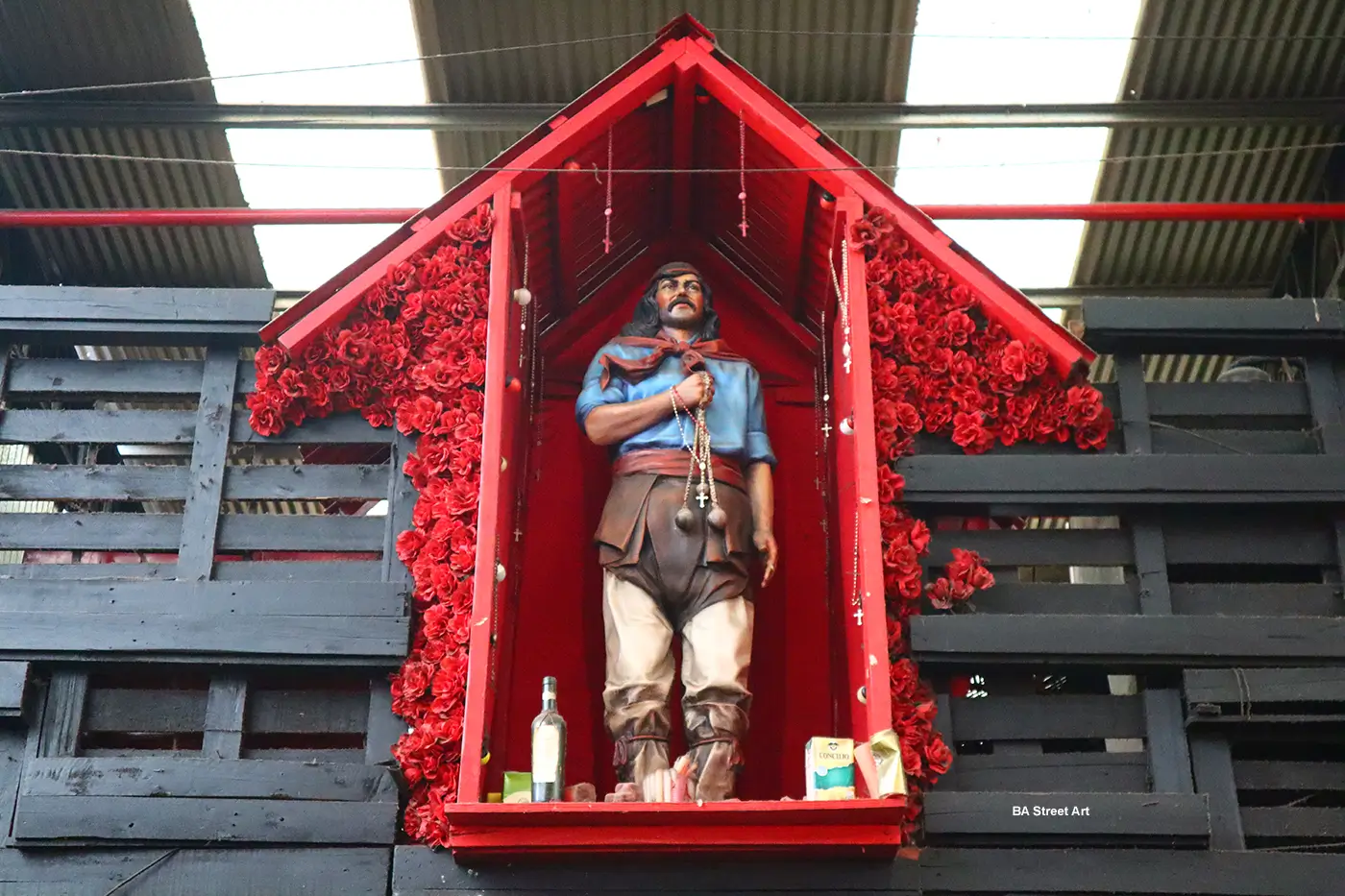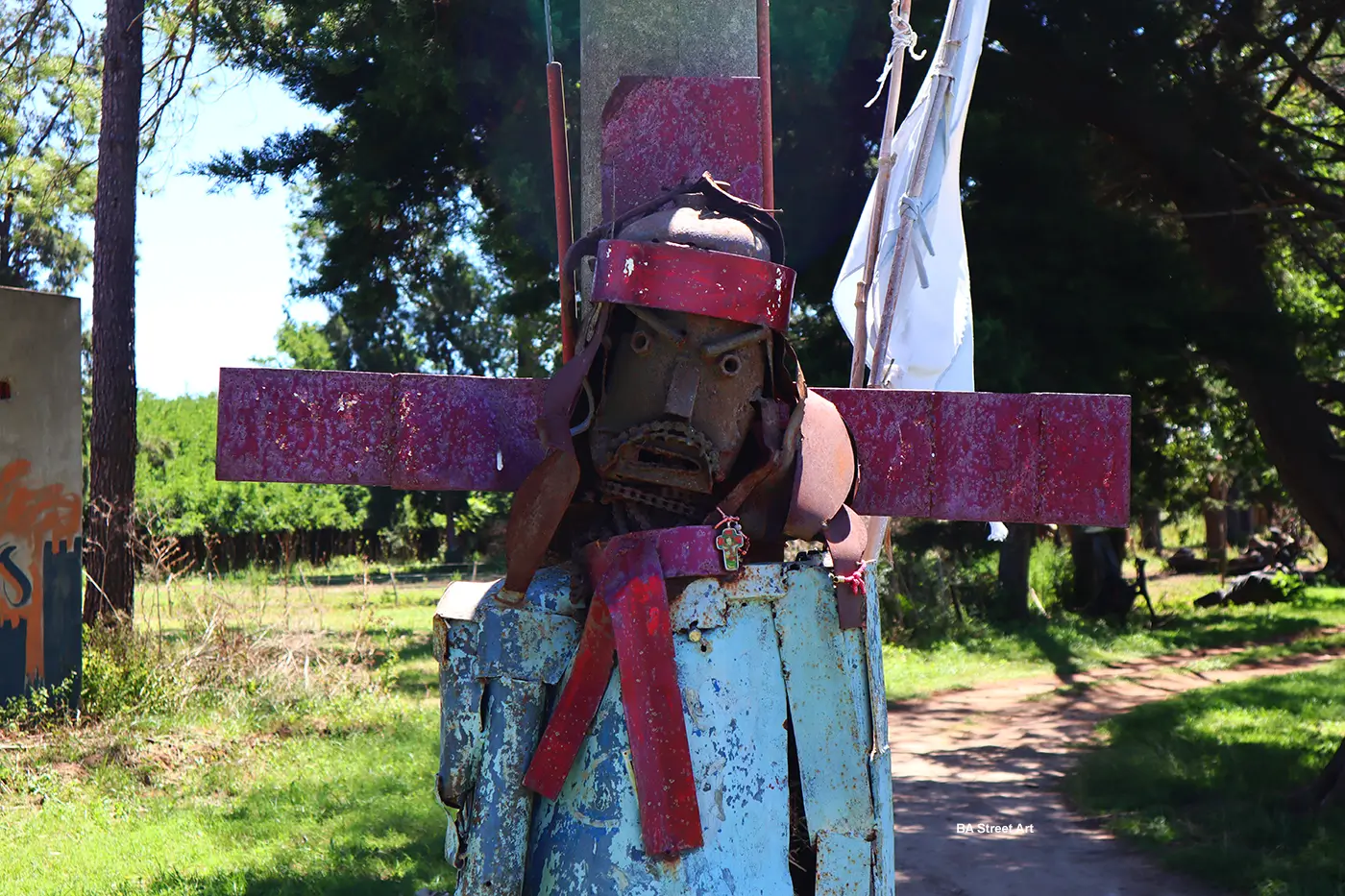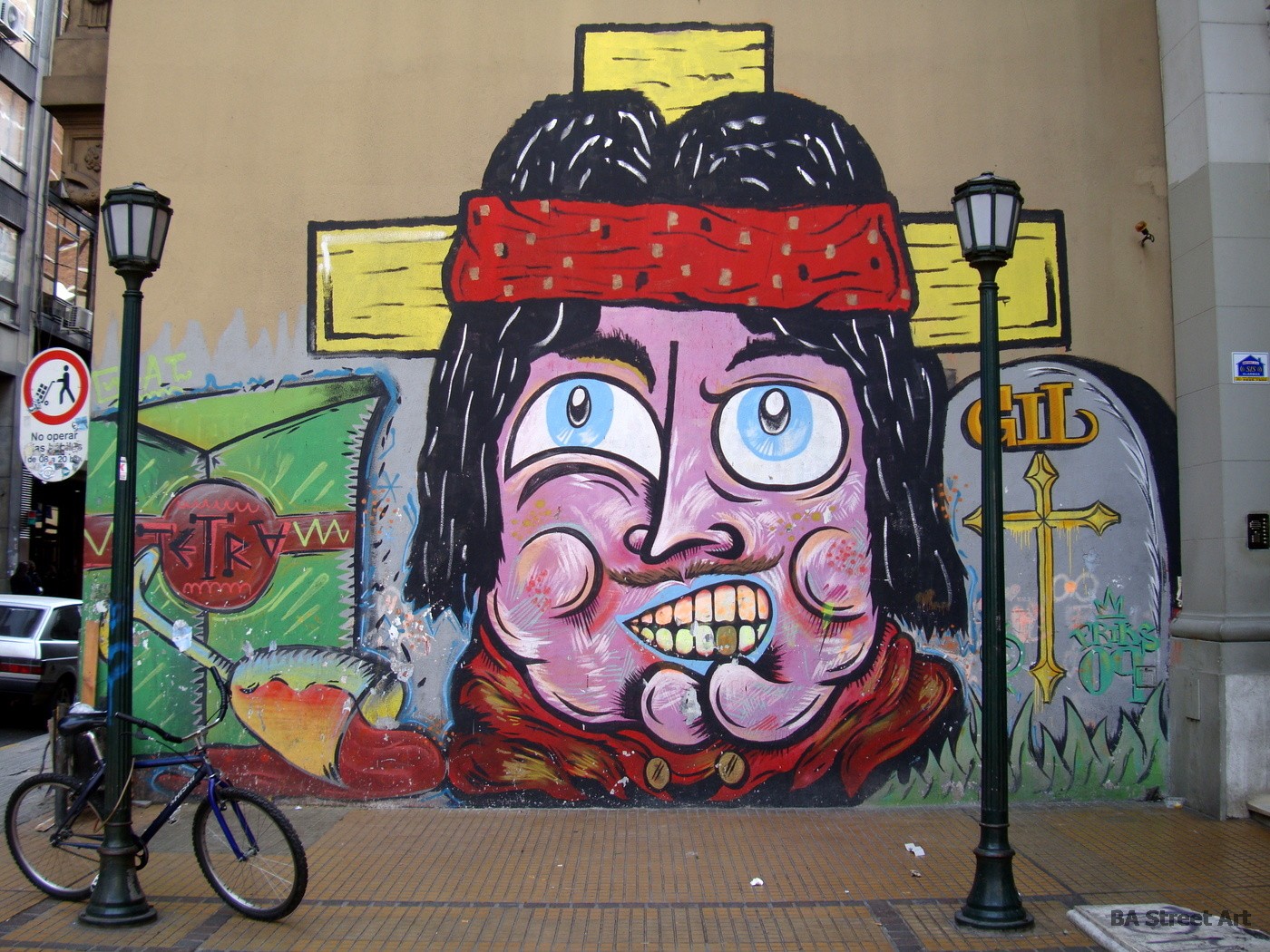Gauchito Gil is one of Argentina’s most revered and popular folk heroes. This week, and on 8th January each year, pilgrims flock to his sanctuary in Mercedes, Corrientes to pray for miracles or pay tribute to him. Murals dedicated to Gauchito Gil can be found all over the country. Photos by Buenos Aires Street Art.
If you’re driving along a country road or motorway in Argentina, you might have noticed mini red houses by the kerb. These are shrines where travelers pay homage to the patron saint Antonio Mamerto Gil Nuñez. And it’s a common sight to find cigarettes, alcohol and candles left by small altars as offerings.
It’s difficult to be too precise about the origins and true story of Gauchito Gil but he was thought to have been born on August 12th possibly 1847, in Mercedes, Corrientes in the north of Argentina. It’s said that Gil was a hell-raiser who liked a drink and that his hypnotic gaze struck fear in his enemies and also helped lure the ladies. Legend has it that Gil was recruited to fight in the Triple Alliance War with Paraguay but deserted after the Guarani god Ñandeyara appeared to him in a dream asking him: “Do you want to spill the blood of your fellow men?” After that, Gil was believed to have become an outlaw and thief – robbing from the rich and giving to the poor and became a wanted man by the authorities. Also seducing a woman who the local police commissioner had eye on might have something to do with him having a bounty on his head.
While continuing to evade capture by the authorities, the villagers in Corrientes began to regard Gil as a local hero – a Robin Hood figure – who stood up for the common man and robbed from the rich to give to the poor. He also developed a reputation as avenging the humiliated and healing the sick.
It’s said that Gil was also a hell-raiser who liked a drink and that his hypnotic gaze struck fear in his enemies and also helped lure the ladies.
While Gil’s reputation and fame began to grow in Corrientes, so did the determination of the police to catch him regarding him as a symbol of resistance and threat to their power and authority.

Mural of Antonio Gil by Figu (photo © BA Street Art)
Artists like Figu have dedicated various murals to the folk hero that can be found in different neighbourhoods of Buenos Aires.

Statues of Gauchito Gil, death & bottles of wine in a shrine in Buenos Aires (photo © BA Street Art)
The decoration of some shrines around Buenos Aires is akin to the celebrations for Day of the Dead in Mexico. Skulls, Death wielding a scythe, crucifixes, figurines, ashtrays, masks, flowers and dozens of bottles of red wine decorate this red house.
Around 1847, in Mercedes in the province of Cuesta, Gil was finally captured by the police while he was taking a nap after a night of partying during a festival for Saint Baltazar. His two friends were killed instantly after being caught by the police but Gauchito Gil managed to dodge all the bullets. He was saved by a Saint of Death amulet that was hanging around his neck.
There are differing versions of the story but it’s believed that on January 8th, 1874, the authorities decided to transfer Gauchito Gil to the city of Goya where he was to be tried. But on the way, eight kilometres from Mercedes, the officer in charge ordered his troops to hang Gil upside down from a tree.

Giant sanctuario with figure of Gauchito Gil (photo © BA Street Art)
None of the soldiers who knew about Gauchito’s powers, dared to execute him. Finally, Colonel Velázquez, carrying out orders from a superior, slit Gil’s throat. They say his blood fell like a torrent that the earth swallowed. From that moment on the myth was born and his murderer became his first disciple.

Phrase by Gauchito Gil shrine: “If death follows me, it’s because death protects me.” (photo © BA Street Art)

Metal sculpture of Gauchito Gil on a cross in province of Buenos Aires (photo © BA Street Art)
“With the blood of an innocent, another innocent will be cured,” Gauchito supposedly told his executioner before he was beheaded. The colonel, after handing over Antonio Gil’s head to the authorities, went home and upon arrival found his son dying. In desperation he remembered the words of the gaucho and rode at full speed to the area where the body had been buried and a cross of ñandubay had been placed. He gathered the remains of the earth still wet with blood, anointed his son with it and the his son recovered as if a miracle had occurred.”

Image of Gauchito Gil with dagger on the back of a caravan with San Expedito (photo © BA Street Art)
An image of Gauchito Gil holding a dagger inside a picture frame (above) decorates this trailer that can be seen around the streets of Buenos Aires. Also depicted on the caravan is an image of San Expedito who is the patron said of just and urgent causes who is worshipped by thousands of people.
Humorous Paste-ups featuring Gauchito Gil’ can be found around the city. This one in Pasaje Russel in Palermo Soho features Freddie Mercury; and another has a pun about the word ‘gil’ that in Spanish can also mean ‘fool’.
Such is the popularity of Gauchito Gil that you can also see people with tattoos and car stickers dedicated to the folk hero.
Red ribbons dangling from car bumpers are also used to bring good luck to motorists and travelers.
All photos © Buenos Aires Street Art















